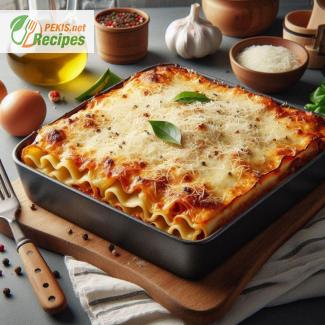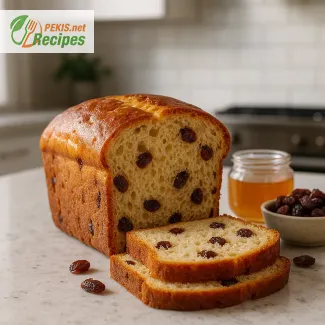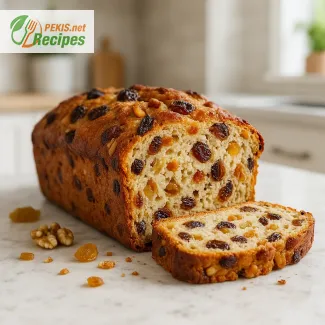
Indulge in the timeless allure of baked lasagna, a dish that unites the rustic flavors of Italy with layers of comfort and warmth. This version, crafted with rich mozzarella and aged parmesan, elevates a classic to new heights, inviting you to relish every forkful of its velvety textures and savory depth.
At the core of this lasagna lies a sumptuous meat sauce, slow-cooked to bring out the natural sweetness of tomatoes and the robust flavors of seasoned ground beef and Italian sausage. Sautéed onions, garlic, and a touch of herbs create a deeply aromatic base, allowing the tomatoes to meld into a perfectly balanced sauce that embraces each layer of al dente lasagna noodles. This sauce, gently simmered to reduce and thicken, transforms into a savory blanket that soaks through the pasta layers, giving each bite a perfect harmony of texture and taste.
Each layer of noodles receives a generous spread of creamy ricotta mixed with herbs and a hint of garlic. The ricotta brings a luscious, mildly tangy element that lightens the richness of the lasagna, providing a perfect foil to the robust sauce. Layer by layer, this ricotta mixture intersperses with melty mozzarella and grated parmesan for an irresistible blend of cheese textures—from gooey to crispy and slightly nutty on top.
Mozzarella is generously scattered throughout, prized for its mild, creamy flavor that melts into gooey perfection when baked. This cheese adds a luscious silkiness to the lasagna, binding the layers with its satisfying stretch and creamy taste. It offers a perfect contrast to parmesan, a hard, aged cheese that lends a sharp, nutty profile and a golden-brown finish. The parmesan creates a lightly crisped top, providing a delightful crunch against the smooth, molten layers beneath it.
The careful layering of these elements creates a lasagna that is not only pleasing to the palate but also visually enticing. Once assembled, the lasagna is gently covered with foil and baked slowly, allowing the ingredients to meld together in a slow symphony of flavor. As the dish bakes, the cheeses melt and meld, oozing between layers and mingling with the sauce in pockets of creamy decadence. In the final moments, the foil is removed, and the lasagna is baked until the parmesan topping turns a rich golden-brown, with slightly crisped edges and a perfectly bubbling surface.
Upon emerging from the oven, the lasagna rests briefly to set the layers, ensuring each slice reveals a perfect cross-section of pasta, sauce, and cheese. This dish is ideally served hot, each portion oozing with sauce and cheese, yet holding together in a comforting, cohesive bite. Freshly chopped basil or a sprinkle of parsley adds a pop of color and a burst of freshness to this otherwise rich, savory dish, balancing the lasagna with an herbaceous finish.
Each bite is an experience in itself—a harmonious blend of creamy ricotta, stretchy mozzarella, and sharp parmesan that complement the hearty meat sauce and tender pasta. The combination of textures and flavors is a tribute to the joy of traditional Italian cooking, celebrating both the quality of ingredients and the care taken in preparation. This baked lasagna is more than a meal; it's an invitation to enjoy the comforts of home, the richness of Italian heritage, and the satisfying allure of a perfectly layered, expertly baked dish.
Serve this lasagna as the centerpiece for gatherings, where each slice embodies the joy of sharing delicious food. Paired with a glass of Chianti or Sangiovese, it promises an authentic Italian dining experience. Whether enjoyed around a festive table or savored quietly on a cozy evening, this baked lasagna is a dish that warms both heart and soul.
Step 1: Prepare the Meat Sauce
- Heat the olive oil in a large saucepan over medium heat. Add the chopped onion and garlic, sautéing until they become translucent and fragrant (about 3–4 minutes).
- Add the ground beef and Italian sausage. Cook until browned, breaking the meat apart with a spoon, for about 6–8 minutes.
- Stir in the canned tomatoes, tomato paste, basil, oregano, salt, and pepper. Simmer on low heat for 20–25 minutes, stirring occasionally until the sauce thickens slightly.
Step 2: Prepare the Ricotta Mixture
- In a medium bowl, combine ricotta cheese, egg, parmesan, and chopped parsley. Stir until smooth and well-blended. This mixture will add a creamy layer to the lasagna.
Step 3: Preheat and Cook Lasagna Noodles
- Preheat the oven to 180°C (350°F).
- Boil a large pot of salted water, then cook the lasagna noodles according to package instructions, usually about 8–10 minutes for al dente. Drain and lay them flat on a clean surface to prevent sticking.
Step 4: Assemble the Lasagna
- Spread a thin layer of meat sauce at the bottom of a 9x13-inch (23x33 cm) baking dish. This prevents the noodles from sticking.
- Place a layer of 3 lasagna noodles over the sauce.
- Spread 1/3 of the ricotta mixture over the noodles, followed by 1/3 of the meat sauce. Sprinkle 1/3 of the mozzarella and a light dusting of parmesan over the sauce.
- Repeat the layering: noodles, ricotta, meat sauce, mozzarella, and parmesan until all ingredients are used, ending with mozzarella and parmesan on the top layer for a golden, crispy finish.
Step 5: Bake the Lasagna
- Cover the baking dish with foil and bake for 45 minutes. Remove the foil, then bake for an additional 15 minutes until the cheese on top is bubbly and golden brown.
- Let the lasagna rest for 10–15 minutes before serving. This allows the layers to set and makes slicing easier.
Serving Suggestions:
Cut into squares and serve with a garnish of fresh basil or parsley. A side salad and a glass of Italian red wine complement this classic lasagna beautifully.
Enjoy each bite of this rich, layered Italian classic!
The nutritional profile and ingredients of baked lasagna with mozzarella and parmesan bring a balanced mix of proteins, fats, carbohydrates, vitamins, and minerals that can offer both immediate energy and longer-term health benefits when consumed in moderation. This dish provides essential nutrients and supports body functions, with a few considerations for those mindful of dietary balance.
Protein Sources: Meat and Cheese
The primary protein sources in this lasagna come from ground beef, Italian sausage, ricotta, mozzarella, and parmesan. Proteins are essential for muscle growth, tissue repair, and enzyme production. Meat-based proteins offer a complete amino acid profile, crucial for maintaining muscle mass and overall health.
Ricotta, mozzarella, and parmesan add proteins that are easier to digest than meat proteins, supporting muscle maintenance and helping with satiety, which can prevent overeating. Parmesan, in particular, is high in the amino acid tyrosine, which may aid in neurotransmitter production, supporting mental alertness and cognitive function.
Vitamins: B-Vitamins, A, and D
- B-Vitamins: Beef and Italian sausage are rich sources of B-vitamins, especially B12, B6, and niacin. These vitamins are essential for energy metabolism, helping the body break down macronutrients for fuel. Vitamin B12 supports red blood cell production and is beneficial for brain health, while niacin aids in DNA repair and promotes skin health.
- Vitamin A: Mozzarella and parmesan provide modest amounts of vitamin A, which is essential for maintaining healthy vision, immune function, and skin health. This vitamin also acts as an antioxidant, neutralizing free radicals that may contribute to chronic diseases.
- Vitamin D: Often added to dairy products, vitamin D supports calcium absorption, bone health, and immune function. It works alongside calcium from the cheeses to promote strong bones and may help reduce the risk of osteoporosis.
Minerals: Calcium, Phosphorus, and Iron
- Calcium: Ricotta, mozzarella, and parmesan are excellent sources of calcium. This mineral is vital for bone density, dental health, muscle function, and nerve signaling. Regular intake of calcium can help prevent osteoporosis and maintain cardiovascular health.
- Phosphorus: Meat and cheese also provide phosphorus, another crucial mineral for bone and tooth health. Phosphorus supports energy production and DNA synthesis, contributing to cell growth and repair.
- Iron: The ground beef and Italian sausage are rich in heme iron, the form of iron most easily absorbed by the body. Iron supports hemoglobin production, which is essential for oxygen transport in the blood, boosting energy levels and reducing the risk of anemia.
Healthy Fats: Olive Oil and Cheese
Olive oil, used to sauté the ingredients, provides monounsaturated fats. These heart-healthy fats may reduce LDL cholesterol levels, supporting cardiovascular health. Additionally, olive oil contains vitamin E, a powerful antioxidant that promotes skin health and reduces inflammation.
While mozzarella, ricotta, and parmesan contain saturated fats, they also deliver essential fatty acids that support brain health and cell function. The fats in dairy can also help the body absorb fat-soluble vitamins like A and D. However, it’s important to consume these in moderation to avoid excess saturated fat intake, which could raise cholesterol levels if not balanced within a diet rich in unsaturated fats.
Carbohydrates: Energy and Fiber
The lasagna noodles provide carbohydrates, the body’s primary energy source. Carbohydrates are broken down into glucose, fueling the brain and muscles. The tomatoes in the sauce also offer fiber, antioxidants, and vitamin C. Fiber supports digestion, stabilizes blood sugar levels, and can help in maintaining a healthy weight. Vitamin C promotes immune function, skin health, and iron absorption.
Antioxidants and Phytonutrients: Garlic, Tomatoes, and Herbs
- Garlic: Rich in allicin, garlic has been linked to cardiovascular health, immune support, and anti-inflammatory benefits.
- Tomatoes: They are an excellent source of lycopene, a powerful antioxidant that may reduce the risk of heart disease and certain cancers.
- Herbs (Basil, Oregano, and Parsley): These add depth in flavor and contain polyphenols, which have anti-inflammatory and antioxidant properties, supporting immune health and protecting against cellular damage.
Dietary Considerations
Though nutrient-dense, baked lasagna is best enjoyed as an occasional indulgence due to its high-calorie content. The combination of proteins, fats, and carbs offers sustained energy, making it ideal for physically active individuals or those with increased caloric needs. Balancing it with vegetables or a side salad can enhance fiber intake, support digestion, and create a well-rounded meal.
In moderation, this lasagna provides a variety of nutrients that promote muscle repair, bone health, immune support, and cardiovascular wellness, making it a hearty choice for a fulfilling meal.
Baked lasagna with mozzarella and parmesan is a deliciously satisfying meal that, due to its high-calorie content and rich ingredients, is best enjoyed in moderation. For a balanced diet, it’s advisable to include this dish occasionally—perhaps once every one to two weeks—as part of a diverse meal plan. The combination of proteins, healthy fats, and carbohydrates makes it a great choice for special occasions or when you need a hearty, energy-dense meal.
For regular meals, it’s best to accompany lasagna with a variety of vegetables, either as a side dish or mixed into the lasagna layers, to increase the fiber, vitamins, and minerals. Adding greens like spinach or zucchini can lighten the meal’s overall richness while enhancing its nutritional value. This addition also provides beneficial antioxidants and helps support digestion, keeping the dish both nutritious and balanced.
As a final tip, consider preparing lasagna ahead of time and letting it rest before serving. This enhances the flavors as they meld together, providing a richer taste experience. Lasagna also freezes well, making it convenient to prepare extra servings for quick meals in the future. By pairing it with a light side salad and incorporating additional vegetables, you’ll keep this classic recipe a delicious and balanced part of your menu without overindulgence.





